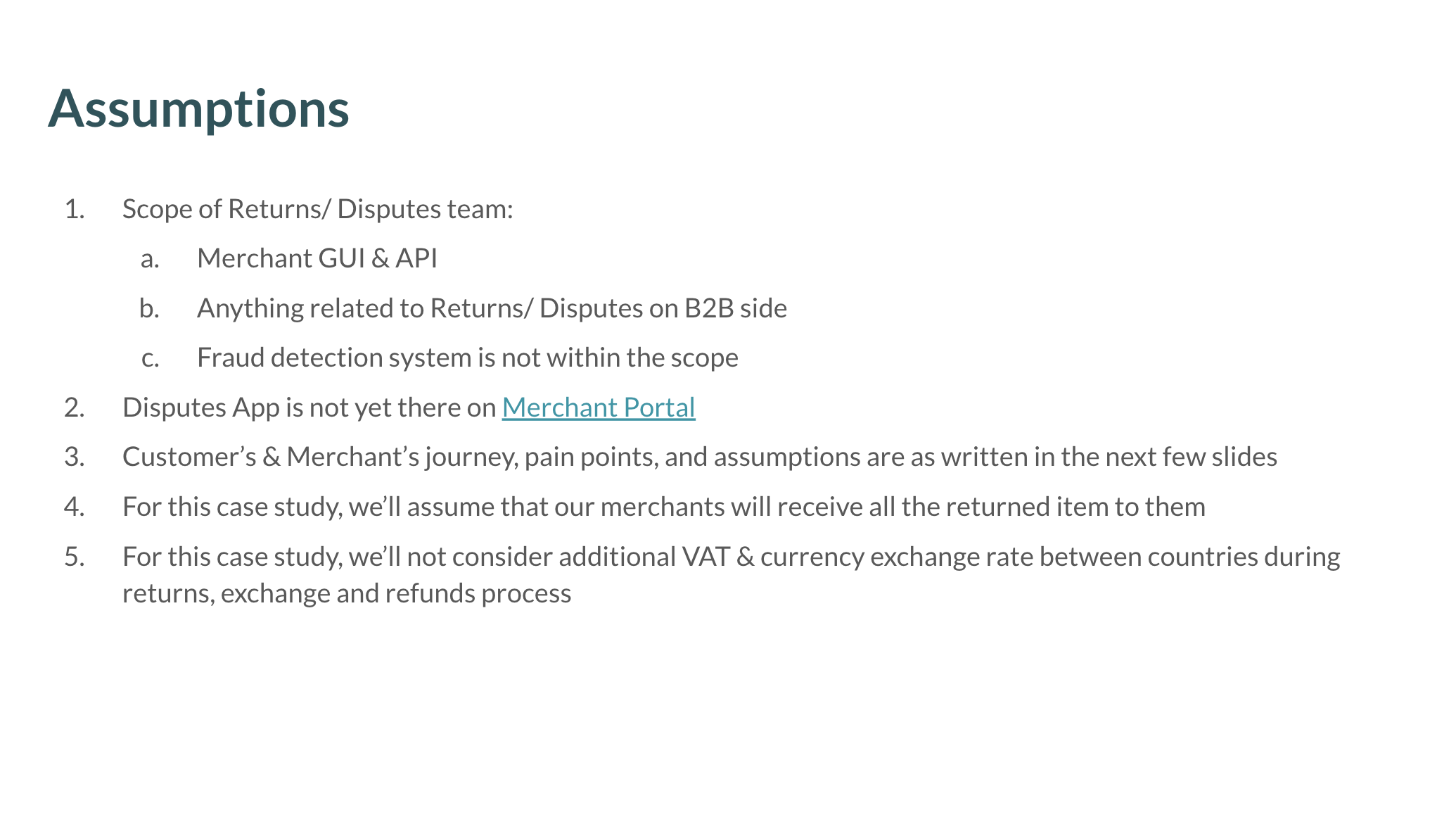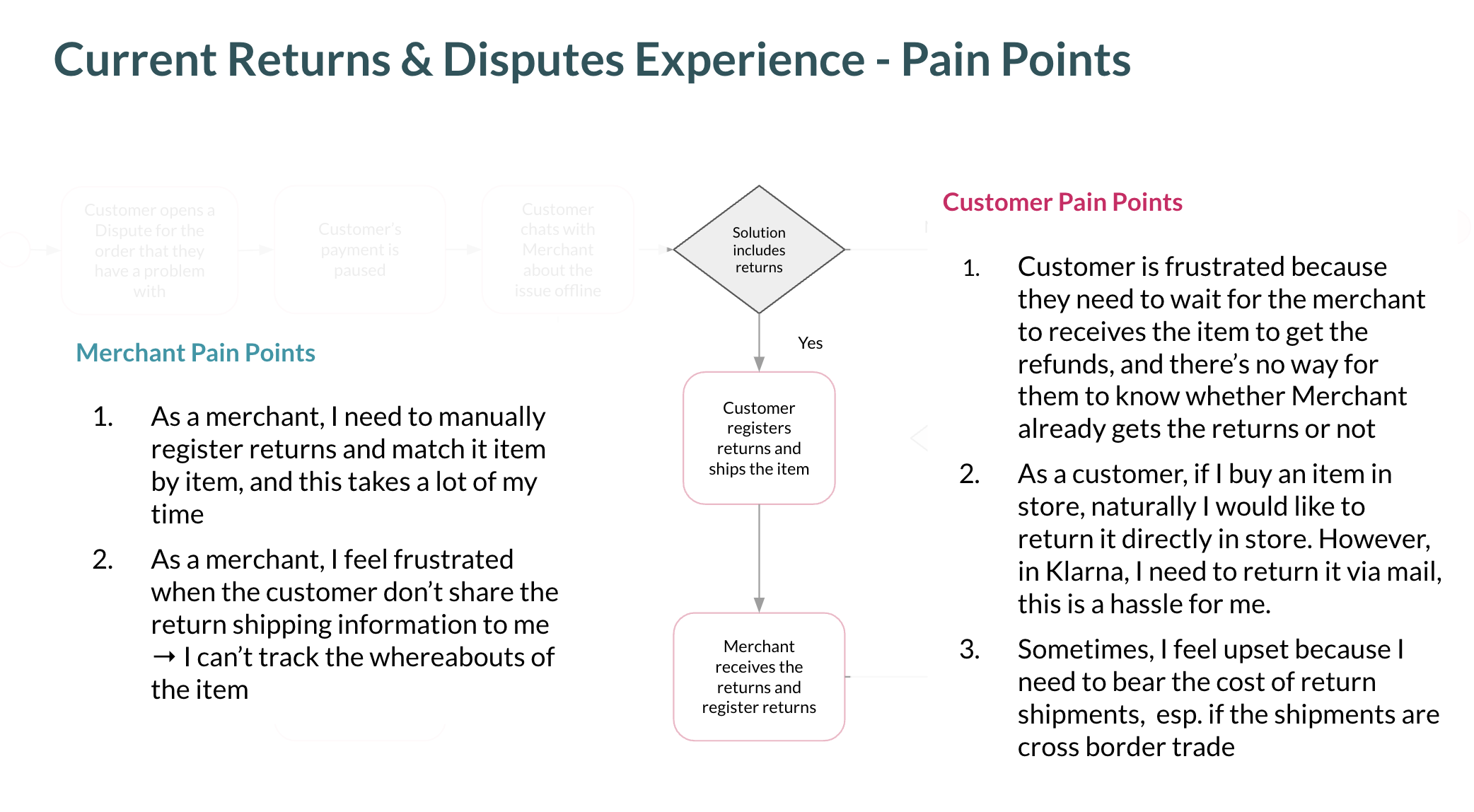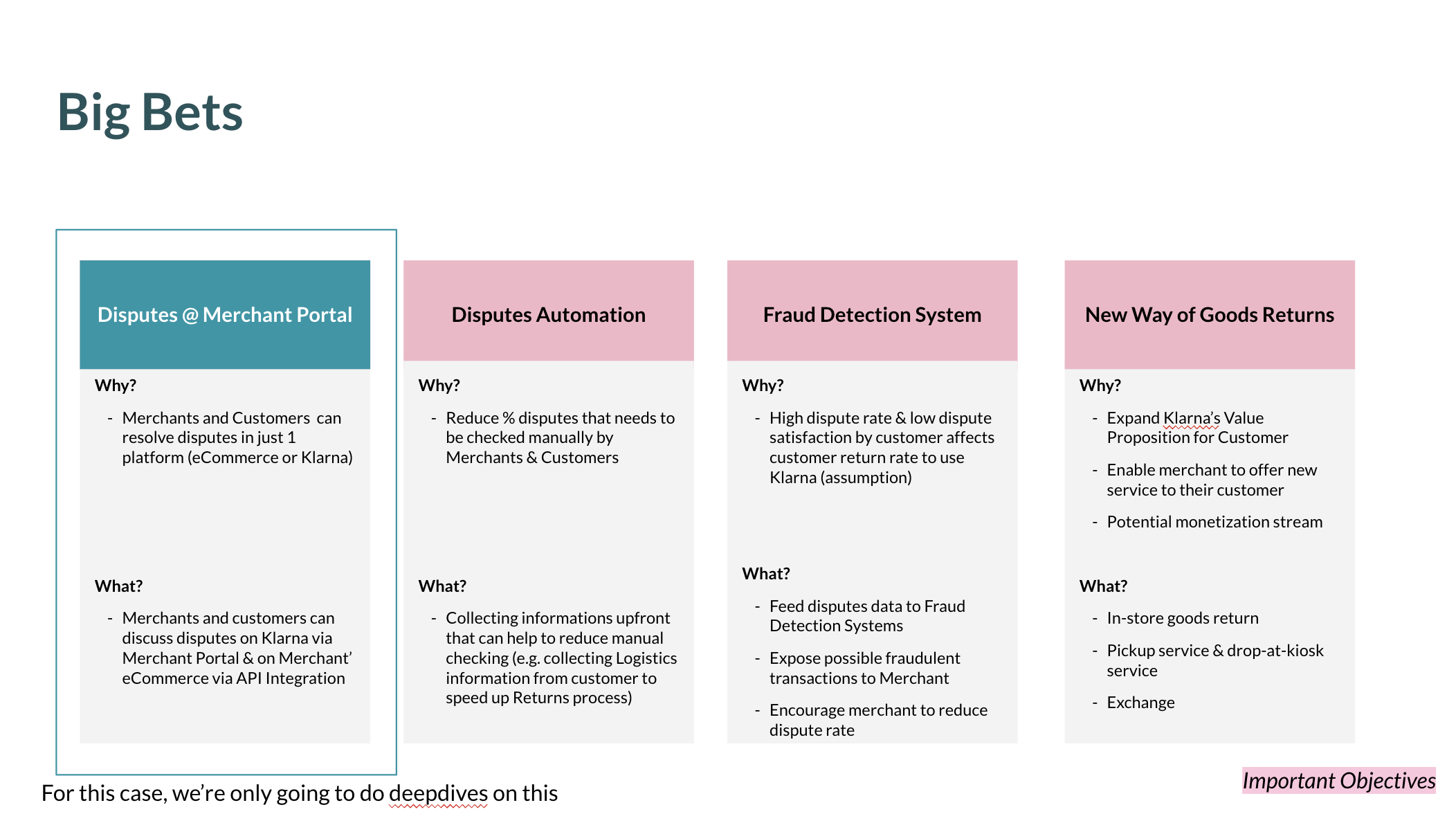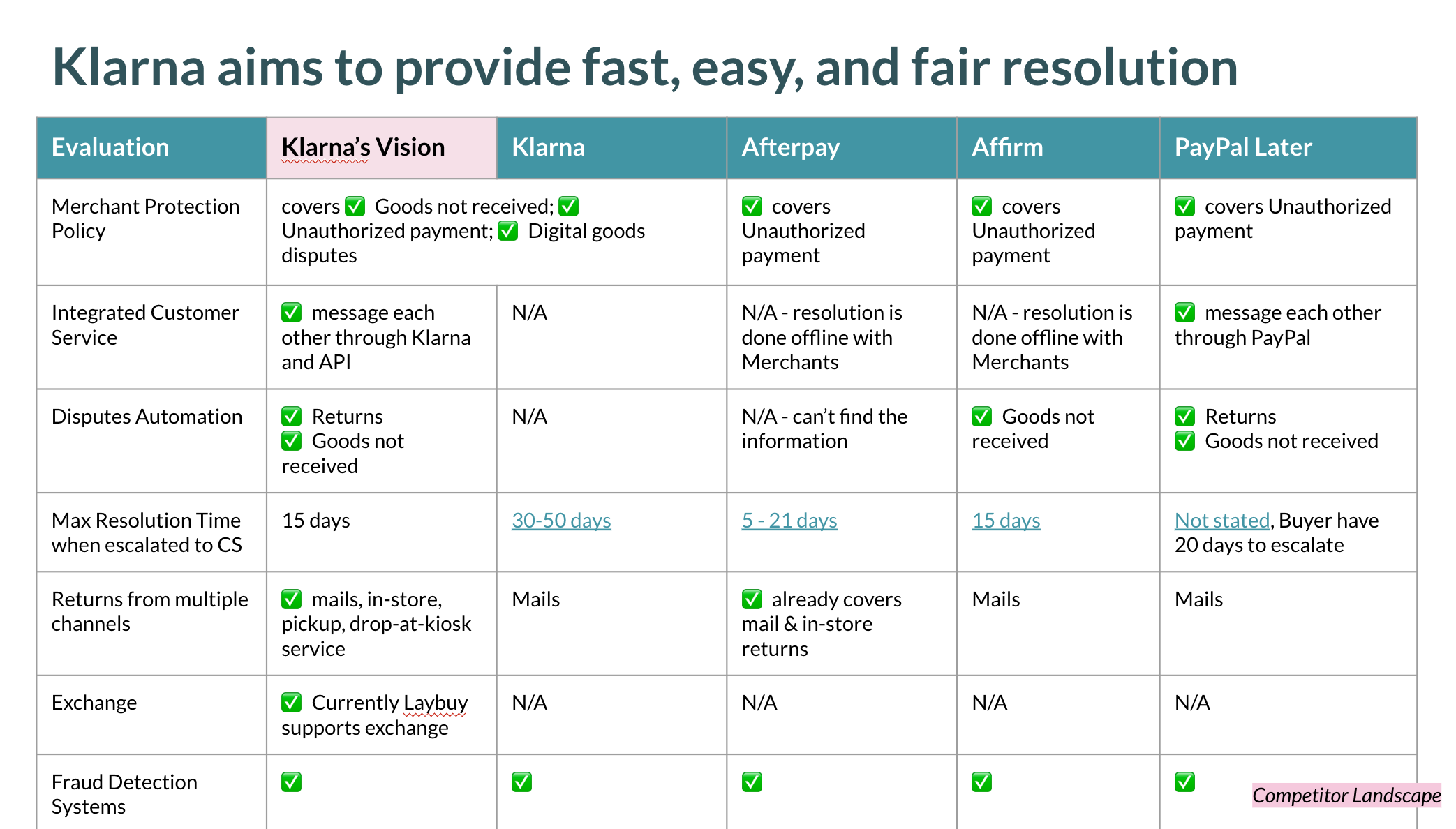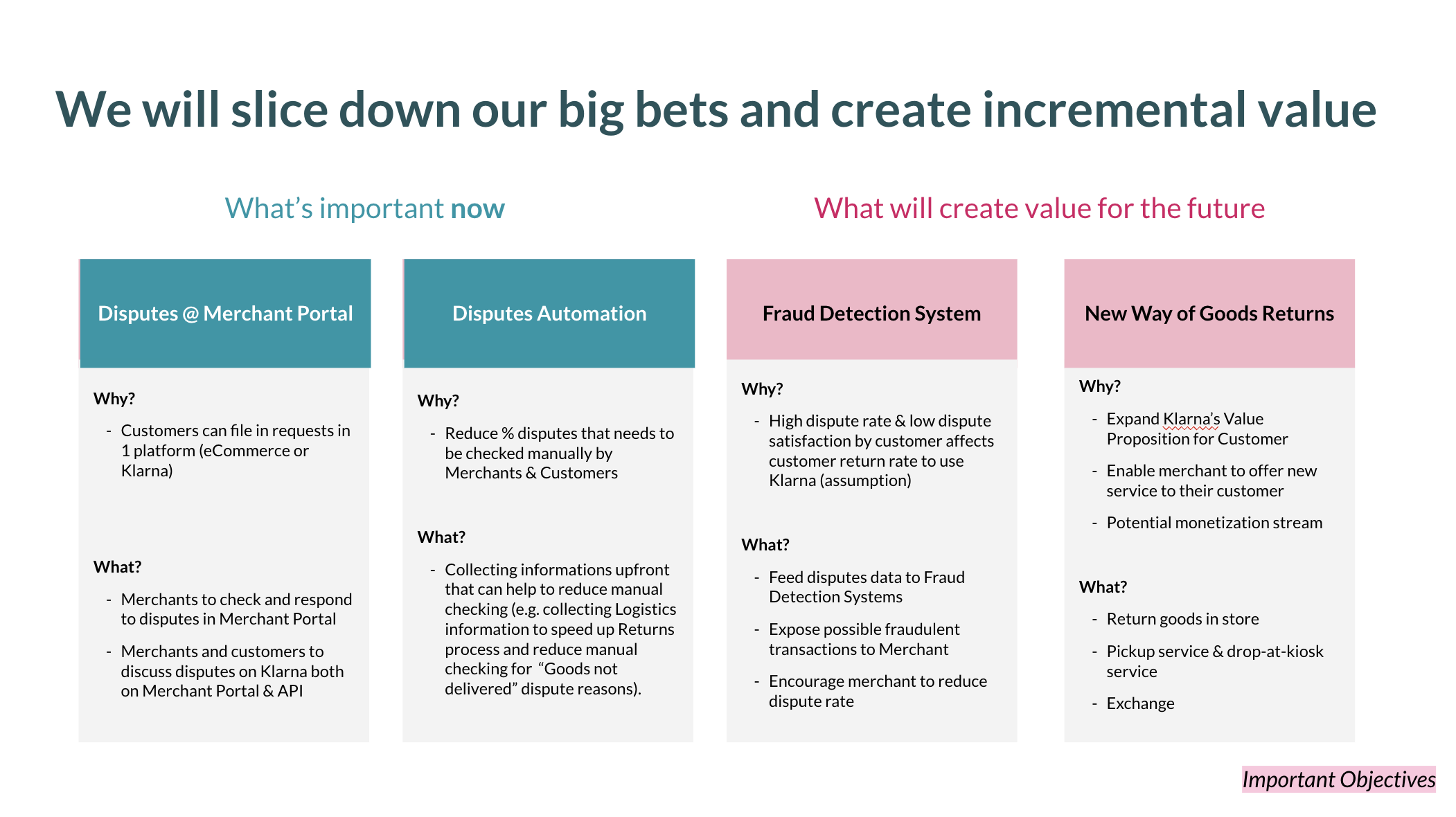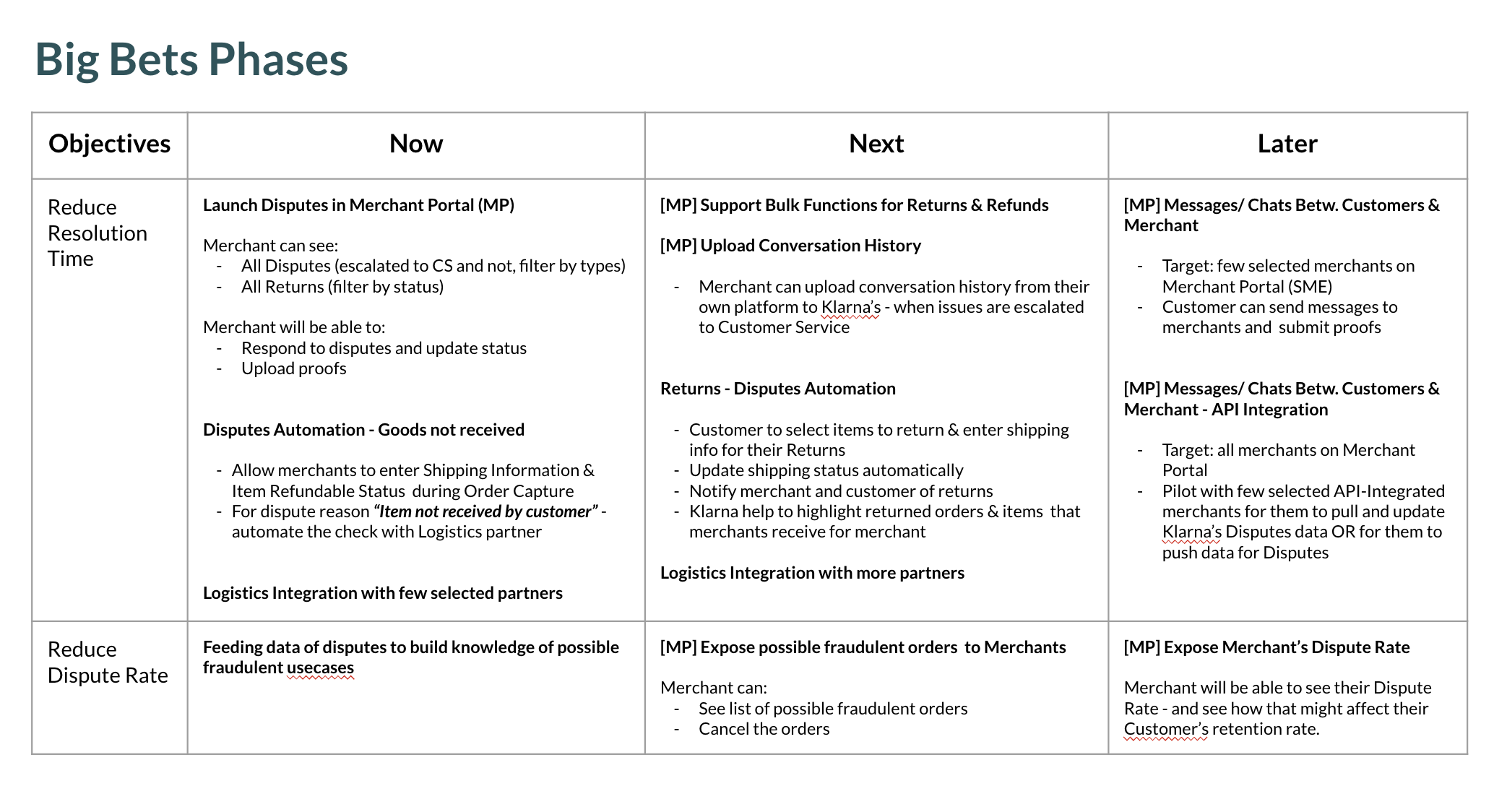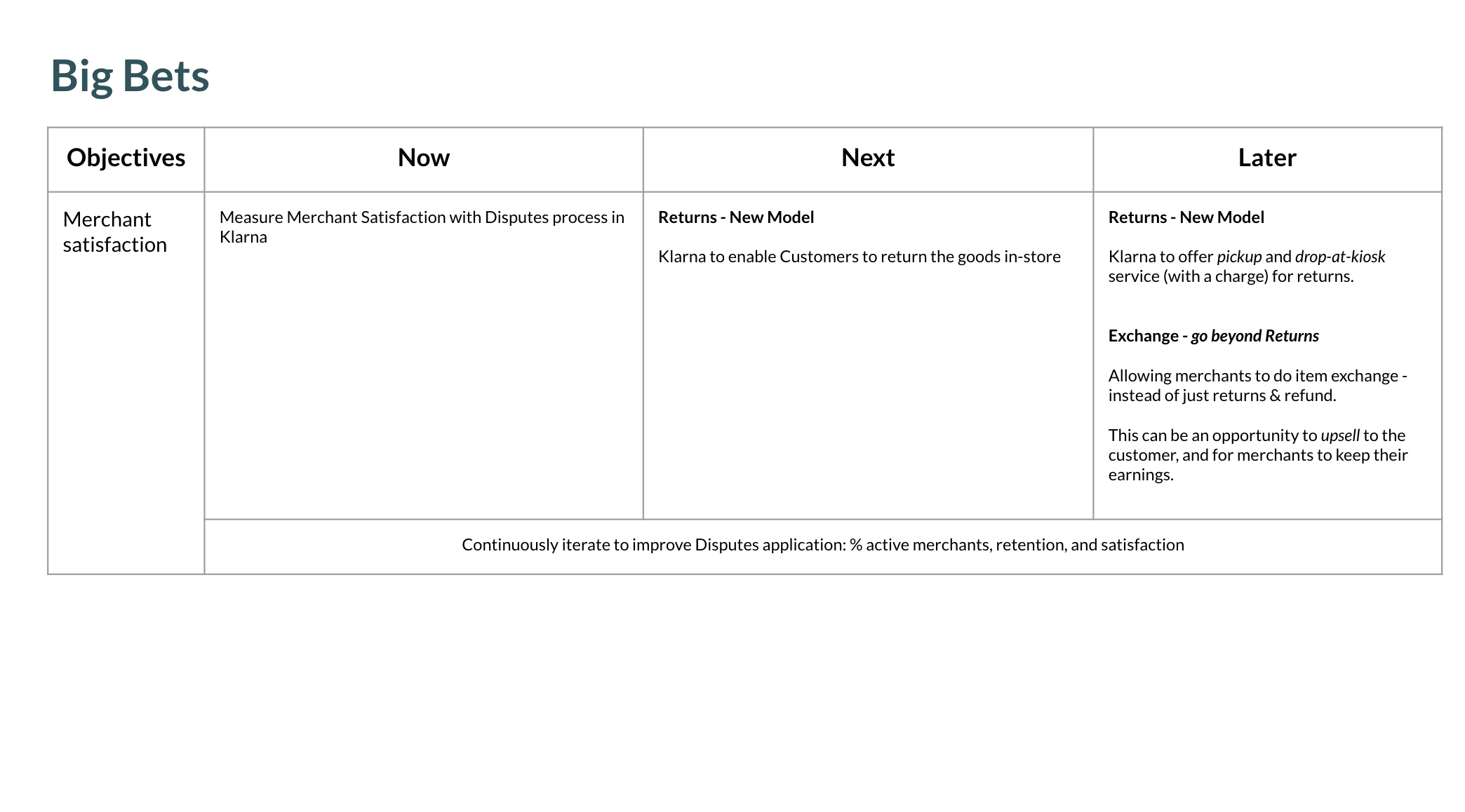Klarna’s Returns/ Disputes Vision (Case Study)
Overall Interview Context
I interviewed with Klarna back in early 2022.
The entire process with Klarna from application to offer took me almost 2 months! They gave me around 1.5 weeks time to do this case study. At the time, because of personal reasons, I can only work on this case study on the day before the interview, a Sunday, from 5PM to 12AM :)
Case Study Questions
As the Product Manager for one of our Returns/ Disputes teams, you are responsible for the returns/ disputes journey of our merchants. As the general product offering we are providing our merchants with all relevant disputes & returns information via an own Web-App in the merchant portal GUI/API.
How would you set a vision for your problem space and what would it look like?
How does your vision compare to the competitor landscape?
What would be your most important Metrics/KPIs for your team?
What are some of the objectives that you would like to prioritize and why?
Overall Approach
I spent most of the time researching Klarna's and Klarna’s competitors’ Return/ Disputes products. Since Klarna wasn't available in Singapore, I couldn't try out the Return/ Disputes directly, so I turned to the Customer Support & Merchant Support Help Center to understand more about the products and the process! I discovered that Klarna has a demo account for their Merchant Portal, which helped me a lot in my research. I also read a lot of Reddit threads on customers' experience with Klarna’s Return/ Disputes process.
My general approach to solve this case study:
Understand the business & its challenges
Why is this product area important for the business?
What's the product + commercial metrics that the business wants to move? Pay more attention here. The metrics you use will define the prio of your product solution. Make sure you're using metrics that are not vanity, important to the company, and you can move it with your product.
Understand the actors involved in the Returns/ Disputes process
Who are the users? Are there user segments that are more important to the business?
What are their pain points?
Brainstorm Ideas & Prioritize it
Brainstorm ideas in these areas: (1) Main function; (2) Growth; (3) Product Market Fit Expansion [PJ] I think people usually focus on how to improve Main Function. Thinking about how to get more customers to use your existing features (Growth) and how you can grow this problem space to expand your PMF will definitely give you plus points.
Prio ideas in each areas based on metrics impacted & user segments affected
Sequence them
How I answered the Case Study
Full Case study answers are in the deck. I want to go through my high-level approach for this case study though. Won't paste all deck's content here.
Started with assumptions and setting the scope for the case study
This is an important step many missed. Since obviously, I am not in the company, there can be many internal priorities/ data that I don't know - e.g. do most Klarna customers use Klarna online or when they purchase from the store?
Then continue with the customer journey + pain points
Since this is an operation-heavy product, a process flow chart always help. Continued to detail the pain points for every steps.
Touched upon my vision-setting process, and onto the vision itself.
3 important components: What are the objectives we want to move, why do we focus there, and what to do to move the objective?
I expanded on one Big Bet example. Because within one big bet, there will be phases to it again.
Demonstrate your ability to go into details!
Kick off with the metrics - this is to ensure you are on the same page with the interviewer
Why this big bet?
How to get there.
Share where Klarna will fare against competitors in this space
+ tie this back to the vision shared before.
p.s. I don't normally do this in a product strategy, but since this is explicitly asked in the case study, I shared my answer for this. I think that comparison to competitor is valid - but that shouldn't drive your product strategy. That's why, I actually quite liked how Klarna asked this question after the product strategy part.
Bonus: Long Term View
To demonstrate that I can think of long term solutions for the squad, and how the squad scope can evolve.
Feedback on the Case Study
My interviewer shared that my roadmap contained 60+% of their actual roadmap - which I think is quite good for someone who doesn't really know the company strategy and the internal data on problems that most merchants/ customers face.
Reflecting back, I wish I could've done a better job to ensure that the slides can be understood by everyone easily & quickly.
Have some more feedback on how I approached the case study? Mail me!

